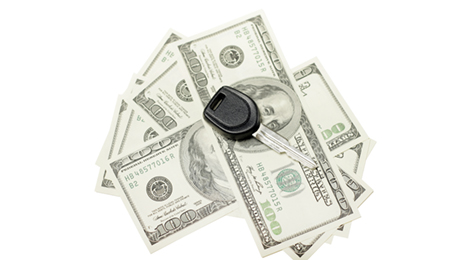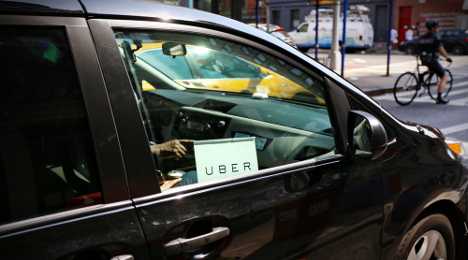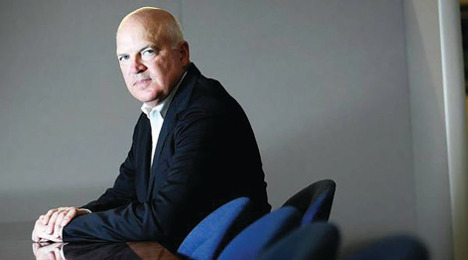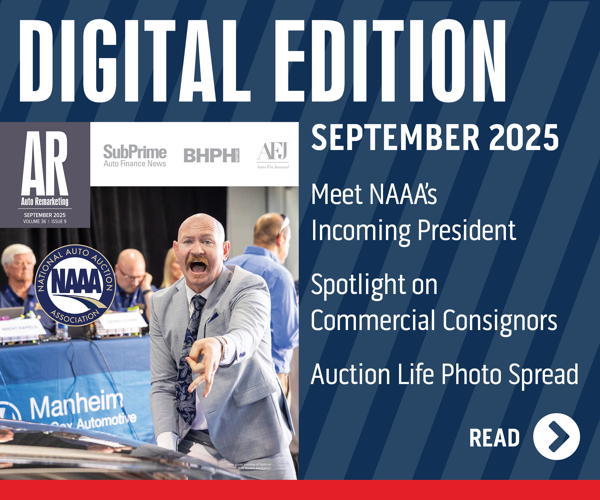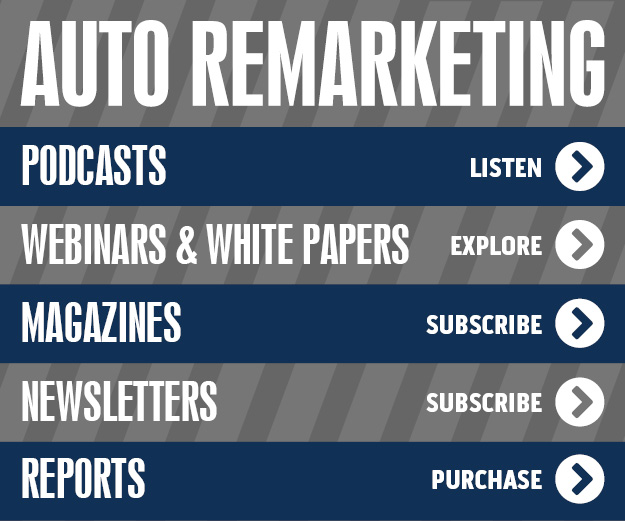The latest report generated by the Federal Reserve Bank of New York declared that 2016 officially represented the year of the highest auto finance originations — at least in the 18-year history of the data officials obtained from Equifax.
And at least one finance company that specializes in subprime paper isn’t sure when the current cycle of aggressive originating is going to slow.
The New York Fed indicated there were $142 billion in auto originations during the fourth quarter, leaving the amount of outstanding balances at $1.16 trillion, roughly $93 billion higher than the close of 2015.
In the company’s letter to shareholders distributed this week, Credit Acceptance chief financial officer Kenneth Booth tried to leverage past credit cycles to project what might happen for the rest of this year and beyond.
Booth told Credit Acceptance shareholders that he expected the current origination cycle to unfold similar to the one that began in 1994, which lasted four years, as well as the one that started in 2003, which stretched on for five years. He acknowledged the current cycle began in 2012 and now is working toward a sixth year.
“While much has been written about an imminent collapse of our industry, so far those predictions have not materialized,” Booth wrote. “The first two cycles ended for different reasons. In the mid-1990s, it was mistakes made within our industry that caused the cycle to end. Like us, others in the industry grossly misjudged the performance of the loans they were originating. In contrast, the end of the 2003–2007 cycle had very little to do with anything that occurred in our industry, but instead was due to the global financial crisis triggered by the collapse of the housing market.
“As I write this letter, it is difficult to see anything on the horizon that will cause this current cycle to end,” he continued. “Some might point to a decline in used vehicle values (which adversely impacts loan performance), although so much has been written about this that I expect many in the industry have already factored it into their models. Some might point to an expected rise in interest rates, although it would seem to be relatively simple for the industry to gradually adjust pricing models to offset any increase in rates.
“Although I continue to believe that we will have a more favorable environment at some point in the future, my long-term outlook has changed,” Booth went on to say.
Booth then mentioned that the current environment “may be the norm,” while the period that included the Great Recession “may be the exception,” in reference to the span from 2008 through 2010.
“While this is not much more than a guess on my part, and I try to avoid making predictions about the future, I think it’s important to share my thoughts with shareholders, even when those thoughts may prove to be incorrect,” Booth wrote. “In my view, it seems likely that the markets that supply capital to our industry may have figured out how to protect themselves by structuring financing transactions with a margin of safety.
“There is much more information available today and a much longer historical track record upon which they can base their conclusions. If so, capital availability may at times be modestly more restricted, but a complete exit of capital sources from our industry as occurred in the mid-1990s and after the financial crisis may not occur for many years,” he continued.
So where do current conditions leave Credit Acceptance and perhaps other finance companies, especially ones that book subprime paper?
“If this is true, we will need to accelerate our ability to adapt to a competitive cycle that lasts much longer than we hoped,” Booth wrote. “For us, this means continuing to focus on our product and our culture, but also recognizing that it will be critical to make progress more rapidly.
“What we don’t plan to do is grow volume by taking risks we view as unwise. Instead, we will continue to invest your capital in ways we think make sense and return the rest to you,” he added.
In a new report released on Monday, Moody’s Investors Service explained what likely might be happening in the war rooms at auto finance companies nowadays.
Financing providers are increasingly faced with the choice of taking on greater risk by rolling negative equity at trade-in into the next vehicle loan. The credit rating agency believes finance companies are increasingly accepting this choice, resulting in mounting negative equity with successive new-car purchases and growing credit risk.
“Now that new-vehicle sales have plateaued, the competition for remaining loan supply will intensify, driving increased credit risk for auto lenders,” according to Jason Grohotolski, a Moody’s vice president and senior credit officer.
Moody’s pointed out that the need for auto finance companies to be more accommodative to sustain or increase origination volumes is compounding credit risk on their balance sheets at a time when the average dollar amount of negative equity at trade-in is at record levels.
According to Edmunds data, an estimated 32 percent of all trade-ins toward the purchase of a new model through the first three quarters of 2016 were underwater. This is the highest rate on record, and it’s up from 30 percent of all trade-ins toward new-vehicle purchases from January to September of last year. These “upside down” shoppers had an average of $4,832 of negative equity at the time of trade-in, also a record.
The phenomenon of upside down trade-ins is not limited to new-model purchases. According to Edmunds’ Q3 Used Vehicle Market Report, a record 25 percent of all trade-ins toward a used-car purchase in the third quarter had negative equity. These shoppers had an average of $3,635 of negative equity at the time of trade-in, also a Q3 record in the used market.
“It’s curious to see just how many of today’s car shoppers are undeterred by how much they owe on their trade-ins,” Edmunds senior analyst Ivan Drury said. “With today’s strong economic conditions at their back, these shoppers are willing to absorb a significant financial hit to get into a newer vehicle.”
Moody’s also mentioned that finance companies also have accommodated borrowers by extending original loan terms, slowing principal amortization for the sector at large.
“As a result, auto lenders increase the collateral deficiencies in their portfolios, and thereby increase loan-loss severities, upping the pressure on their already thin profitability,” Moody’s said in the report, titled Auto Finance — United States: Credit Risk Increases for Lenders, with Negative Equity at an All-Time High.
The report goes on to note that an accommodative financing environment has allowed vehicle buyers to purchase a new model while simultaneously rolling negative equity from a prior loan balance into a new installment contract. Grohotolski explained this pattern is achieved with longer loan terms, higher loan to values and higher interest rates, which creates a “trade-in treadmill” where vehicle buyers are in a cycle of regularly renewing their loans at increased negative equity at trade-in.
Therefore, each successive vehicle installment contract is riskier, according to Grohotolski.
“Consumers will have to get off the treadmill, and the industries’ response will help dictate how painful it is,” Grohotolski said.
Shared exclusively for SubPrime Auto Finance News, Experian Automotive determined the top 20 market holders of what analysts classify as finance companies — operations that do not hold consumer deposits and often specialize in originating subprime paper.
Experian Automotive compiled this listing based on both used- and new-vehicle originations compiled during the fourth quarter. The rundown is as follows:
1. Santander Consumer USA: 16.8 percent
2. Credit Acceptance: 10.6 percent
3. World Omni Financial: 6.8 percent
4. Gateway One Lending & Finance: 6.8 percent
5. Westlake Financial Services: 6.4 percent
6. AmeriCredit Financial Services: 4.8 percent
7. Exeter Finance: 2.6 percent
8. Regional Acceptance: 2.5 percent
9. American Credit Acceptance: 2.3 percent
10. Flagship Credit Acceptance: 2.2 percent
11. Consumer Portfolio Services: 2.1 percent
12. Prestige Financial Services: 1.1 percent
13. Lobel Financial: 1.0 percent
14. Lincoln Automotive Financial Services: 0.9 percent
15. United Auto Credit: 0.7 percent
16. Financial Institution Lending Option: 0.7 percent
17. Reliable Credit Association: 0.6 percent
18. Global Lending Services: 0.6 percent
19. First Investors Financial Services Group: 0.6 percent
20. Nicholas Financial: 0.6 percent
Before Experian released this market share data, many of these finance companies that are publicly traded discussed their Q4 results, including Credit Acceptance chief executive officer Brett Roberts.
“The first factor I would look at is the competitive environment. That certainly makes things challenging. We’re not getting any improvement there, but I don’t think it got any worse either,” Roberts replied when asked what might be impacting originations; elements such as softening consumer demand or the sales battle between franchised and independent dealerships.
“So I think what you saw in the fourth quarter is — as we talked about in prior calls — our strategy when the environment is competitive is to focus on growing the number of active dealers,” Roberts continued according to the transcript of the company’s latest conference call with investment analysts.
“It is difficult to grow volume per dealer when it is very competitive,” he went on to say. “But as I think we alluded to several quarters ago, as the base of dealers gets bigger, it becomes more difficult to grow that at a fast enough rate in order to offset the decline in volume per dealer, and to a lesser extent, attrition. So that is what we're seeing right now. We're having difficulty signing up enough dealers to offset those other two factors.”
Consumer Portfolio Services chairman and chief executive officer Brad Bradley addressed a Wall Street observer inquiry about what firms are originating subprime vehicle installment contracts if the conjecture about many of the firms on the list above is true — that many finance companies are tightening their underwriting. Bradley acknowledged he received the question “about a dozen times in the last couple months” when CPS held its quarterly conference call back in February.
“If vehicle sales are still really strong and subprime is cutting back, who’s buying all this paper, right? The niche that sort of fills that generally speaking would be like credit unions, savings and loans, things like that,” Bradley said. “So maybe the credit unions are picking it all up.
“You’d almost want one guy to say, ‘Oh, ours grew a ton,’ but no one has said that,” he continued. “So the paper’s got to be going somewhere and so maybe a few of the sort of bigger guys are reaching a little bit but it doesn’t seem to appear that way. So the only place it could also disappear that nobody is really seeing it, would be like credit unions. And so that would be if I had to give an answer, I would bet that.
“Subprime is mostly pre-owned vehicles. So you wouldn’t really see the comparison with the new,” Bradley went on to say.
Certain macroeconomic trends — especially employment and consumer confidence — prompted Santander Consumer USA president and chief executive officer Jason Kulas to say that he sees a “fairly stable consumer” after he examined the finance company’s portfolio as well as the entire auto finance market.
However, those two particular economic trends could leave negative ramifications when consumers look to obtain auto financing later this year, in particular individuals who fall into the non-prime or subprime spaces.
To recap those upbeat trends, the U.S. Bureau of Labor Statistics reported this past Friday that total nonfarm payroll employment increased by 235,000 in February, and the unemployment rate remained virtually unchanged at 4.7 percent. Federal officials said employment gains occurred in construction, private educational services, manufacturing, health care and mining.
Meanwhile, The Conference Board Consumer Confidence Index, which had declined moderately in January, increased in February. The index stands at 114.8, up from 111.6 in January.
The monthly Consumer Confidence Survey, based on a probability-design random sample, is conducted for The Conference Board by Nielsen
“Consumer confidence increased in February and remains at a 15-year high,” said Lynn Franco, director of economic indicators at The Conference Board. “Consumers rated current business and labor market conditions more favorably (in February) than in January. Expectations improved regarding the short-term outlook for business, and to a lesser degree jobs and income prospects.
“Overall, consumers expect the economy to continue expanding in the months ahead,” Franco added.
SCUSA conducted its annual investor day just before each of those trends were updated. Still, Kulas conveyed an optimistic assessment.
“This is an interesting topic because there's a lot of people are out with their earnings calls talking about what they're seeing with the consumer. We've done the same,” Kulas said according to a transcript of the event posted by the finance company. “What you'll hear from us is we still think the consumer is pretty strong. It’s not that we ignore trends. We certainly factor in what we see into how we originate and how we think about the future, but the facts are pretty interesting.
“The first one is obviously employment. … The consumer has a job,” he continued. “Consumer confidence is a really positive story right now.
“If you look at debt ratios, while they’re increasing, they’re still below where they were pre-crisis, particularly if you look at auto,” Kulas went on to say. “So for us, it’s not that we ignore the trend. We certainly factor in the trends, but in our assessment of the consumer, the consumer is still relatively strong today, and that’s why we see positive performance. … That's what we see reflected in our performance, a fairly stable consumer.”
Evidently, the Federal Reserve thinks consumers are “fairly stable,” too, which is why it’s widely expected that the monetary agency will push up interest rates later this week. Comerica Bank chief economist Robert Dye is projecting the uptick to be 0.25 percent.
Dye also touched on what else the Federal Open Market Committee (FOMC) is likely to share when it meets this week. The Fed will release a new “dot plot” and economic projections on Wednesday, and chair Janet Yellen will have a press conference.
“With a Fed funds rate hike a near certainty, the focus is now on forward guidance,” Dye said. “If the Fed hikes on Wednesday, they will have begun a pattern of raising interest rates every other meeting, and on meetings with scheduled press conferences. So analysts will be looking for clues in the policy announcement, in the dot plot and in Janet Yellen’s answers to reporters’ questions about the pacing of interest rate hikes for the remainder of this year.
“The December 2016 dot plot was consistent with three rate hikes for 2017. We could see the March dot plot shift upward to be consistent with four rate hikes in 2017. The minutes of the March 14/15 FOMC meeting should prove interesting when they are released on April 5,” Dye went on to say.
Turning back to the event hosted by Santander Consumer USA, chief operating officer Rich Morrin described how interest rates inching higher might impact non-prime auto finance applicants.
“The biggest impact for the most part is going to be the fact that fewer people will not be able to actually transact because we're going to be requiring, for example, more money down to get to a certain amount financed that we're willing to extend,” Morrin said. “So what generally will happen is they just can’t come up with those dollars.”
Morrin went on to mention why SCUSA could handle that development better than other finance companies that book non-prime and subprime paper.
“If the overall market starts to kind of fall, the reason why we feel comfortable given where we are in that space is the fact that we’re a large player in the space and smaller players who are taking share, we start to become in an environment like that given our marginal cost relative to those competitors, we start to be able to pick up volume that they might not be able to pick up in that kind of environment and make better decisions about which consumer should get the right price given that dynamic.
“In an environment like that for non-prime consumers, we would expect that we actually can maintain share or actually potentially grow depending on the ultimate impact to smaller players in the space,” he added.
On Thursday, Equifax announced the global launch of a portfolio of analytics tools dubbed Equifax Ignite that’s available now in the U.S., Canada and the U.K., and coming to Australia in the fall.
The company explained that Equifax Ignite challenges what it classified as the traditional “one size fits all approach” with an innovative suite of solutions that provides fast, configurable and actionable data to solve clients’ most critical challenges and help drive their growth strategies. Offering insights through three distinct delivery channels, Equifax said this “tailored for you” approach was designed with various key users in mind — from marketing senior executives to data scientists.
The driving force behind Equifax Ignite is the company’s established insights through powerful data and analytics solutions that can help propel critical business decisions. Officials said Equifax Ignite embodies the company’s deep expertise in big data, specialized risk, fraud and marketing analytics, as well as its vast portfolio of directly sourced, directly measured data from the credit, finance and telecommunications industries.
Equifax Ignite can deliver deep insights through an extensive data portfolio including trended data, risk scoring models and the linking and keying of disparate sets of data.
“Harnessing the power of big data poses a tremendous challenge for businesses,” said Trey Loughran, chief marketing officer at Equifax. “Whether it’s providing the latest in data visualization through an app or access to our differentiated data, advanced analytical tools and technology, Equifax Ignite brings data to life and helps drive businesses forward by helping the end user become a data-driven organization.”
As an example, the company explained that with Equifax Ignite, a bank could leverage key insights to help assess risk at various decision points relevant to their unique goals. From more accurately targeting and screening new customers through market intelligence and alternative data, to creating risk models and monitoring risk scores over time, the user is able to access the vast array of insights available, using leading-edge analytic techniques.
“Equifax Ignite redefines access to data and speed to market,” said Prasanna Dhore, chief data and analytics officer at Equifax. “There is a paradigm shift happening: the market needs more tailored data solutions that don’t take months to deliver.
“Generic models aren’t relevant to many businesses’ needs, and custom models and diagnostics simply take too long,” Dhore continued. “Equifax Ignite meets market demand through a frictionless process that reduces building, testing and deployment from months to days.”
The Equifax data and advanced analytics is funneled into three delivery channels: Equifax Ignite Models and Scores, Equifax Ignite Direct and Equifax Ignite Marketplace.
• Equifax Ignite Models and Scores: Configurable scores that offer the power of a custom solution with the speed and ease of an off-the-shelf product. The Equifax Ignite portfolio of configurable scores can help businesses enhance customer acquisition, risk segmentation and decisioning, and improve customer relationships.
• Equifax Ignite Direct: Created as a self-serve platform, this high-speed solution can allow users to create analytics using direct access to data, attributes and analytical tools. Seamless integration enables teams to build, test and deploy models that suit their unique needs.
• Equifax Ignite Marketplace: A virtual destination for all of the Equifax analytical applications (apps) available for download. The apps will be leveraged for visualizing and digesting data, benchmarks and trends across industries including insurance, banking and telecommunications.
For more information about Equifax Ignite, visit Equifax.com/EquifaxIgnite.
The amount of debt consumers are absorbing to acquire a new or used vehicle reached record highs during the fourth quarter, according to the latest State of the Automotive Finance Market report from Experian.
With consumers turning to longer-term contracts to help reduce costs of monthly payments, Experian reported on Thursday the average contract amount for a new vehicle reached a record high of $30,621 in Q4 2016. The average finance amount for a used vehicle also reached record levels, jumping from $18,850 in Q4 2015 to $19,329 in Q4 2016.
The report also showed the number of consumers opting for contracts with terms of 73 to 84 months on their new vehicles increased from 29 percent in Q4 2015 to 32.1 percent in Q4 2016. In the used-vehicle market, Experian found there was an increase in 73- to 84-month loans from 16.4 percent in Q4 2015 to 18.2 percent in Q4 2016.
“With the average loan amount for new and used vehicles hitting all-time highs, we are seeing the need for affordability drive consumer purchasing behavior,” said Melinda Zabritski, Experian's senior director of automotive finance.
“Our latest research shows an $11,000 gap between the average loan amount on a new and used vehicle — the widest we have ever seen,” Zabritski continued. “This upward trend is causing many consumers to find alternative methods like extending loan terms, getting a short-term lease or opting for a used vehicle to get what they want while staying within their monthly budget.”
For consumers who still want to drive something new, Experian computed that leasing a new vehicle costs an average of $92 less per month compared with financing. The average monthly payment for a new leased vehicle is $414, versus $506 per month for a new-vehicle purchase.
The number of consumers who chose to lease a new vehicle increased slightly from 28.87 percent in Q4 2015 to 28.94 percent in Q4 2016, according to Experian’s report.
Delinquency on the rise, too
Another key finding in the report is the increase in delinquency rates year-over-year. Experian indicated 30-day delinquencies inched up slightly from 2.42 percent in Q4 2015 to 2.44 percent in Q4 2016, while 60-day delinquencies increased from 0.71 percent to 0.78 percent.
In response to these increases in delinquencies, Experian asserted that finance companies continue to adjust their underwriting strategies by shifting more contracts toward customers with better credit.
For new-vehicle financing, the average credit score moved from 712 in Q4 2015 to 714 in Q4 2016. For used-vehicle contracts, the average credit score jumped 5 points from 649 in Q4 2015 to 654 in Q4 2016.
Overall, Experian said financing to deep-subprime and subprime customers decreased from 22.05 percent of the total lending market in Q4 2015 to 20.82 percent in Q4 2016. Financing to prime and super prime customers jumped from 57.86 percent in Q4 2015 to 59.41 percent in Q4 2016.
“Delinquencies are always an important indicator of the overall health of the automotive lending market, but it's equally important to watch how lenders react when they see a rise,” Zabritski said.
“The shift to a higher percentage of prime and subprime customers is a natural consequence of the slight growth in delinquencies,” she continued. “Overall, we are still looking at a very healthy lending market.”
The report also showed that used vehicle financing grew to 41.85 percent in the super prime consumer segment, an increase of 5.4 percent year over year. Moreover, franchised and independent vehicle dealers saw their biggest year-over-year increases in super prime consumer lending, with 5.91 percent and 13.8 percent, respectively.
Other key findings for Q4 2016:
—Total open automotive finance balances reached a record high $1.072 trillion in Q4 2016, up from $987 billion in Q4 2015; however, year-over-year growth is continuing to slow.
—Banks lost market share of total vehicle financing, dropping from 35.6 percent in Q4 2015 to 32.9 percent in Q4 2016.
—Credit unions and captives increased market share of total vehicle financing, growing to 19.1 percent and 28.4 percent, up from 18 percent and 27.8 percent, respectively.
—The average monthly payment for a new-vehicle contract was $506, up from $493.
—The average new-vehicle lease payment was $414, up from $412.
—The average monthly payment for a used-vehicle contract was $364, up from $359.
Westlake Financial Services is looking to use a pair of technology advancements in an effort to drum up more business for the finance company that specializes in subprime retail installment contracts.
First this week, Westlake launched an online indirect auto finance pre-qualification platform for new and returning customers looking to finance their next vehicle.
Also, Westlake recently formed a partnership with AutoGravity, a FinTech company that says it’s on a mission to transform auto financing by harnessing the power of the smartphone. The partnership is to provide access to Westlake auto financing options through the innovative AutoGravity digital platform. Qualified buyers are now able to access a broader set of auto finance options through the AutoGravity iOS, Android and Web Apps.
To conclude 2016, Westlake said it dedicated multiple resources to develop a new online platform that aims to make the vehicle buying process — which the company acknowledged can sometimes be confusing and difficult — simple and stress-free.
“By offering online pre-qualification, we help car buyers discover their buying power without affecting their credit,” said Ralph Ontiveros, vice president of Westlake Lending Solutions.
“Upon approval, customers can view inventory available from dealerships that fit their pre-qualification parameters and set up a test drive with the car of their choice at the selected dealership all before closing their browser,” Ontiveros said.
Westlake only offers online pre-qualification in the state of California, but plans to expand to other states throughout 2017. Customers outside of California are not yet able to obtain a pre-qualification or view inventory, but can still go through the financing process online and will be directed to nearby dealers participating in Westlake’s network of over 50,000 preferred dealership program.
“Our goal was to commence 2017 with a platform that benefits car buyers and we achieved just that with this online launch,” said Ian Anderson, group president of Westlake Financial Services. “We even developed incentives to give back to returning customers and to show our appreciation to new customers who choose to finance with us.”
Westlake currently offers vouchers for use toward down payment in the amounts of $200 to new customers and up to $500 to returning customers, based on the amount financed and other select criteria.
Meanwhile with this other partnership, AutoGravity can provide Westlake products to a growing population of digital-first vehicle shoppers. AutoGravity customers, in turn, can benefit from an expanded set of financing options for the vehicle they purchase.
“We created AutoGravity to improve the car financing experience by putting multiple finance options in the palms of customers' hands,” said Andy Hinrichs, founder and chief executive officer of AutoGravity. “Our partnership with Westlake Financial Services drives more customers to dealerships and expands Westlake's ability to finance customers with all credit types.”
AutoGravity contends that it realizes the full potential of smartphone technology to quickly connect vehicle shoppers with finance companies and dealers that fit their needs. Customers can select any new vehicle by make, model and trim, find nearby dealerships that carries that vehicle, apply for financing and choose from up to four personalized financing options in the app. Equipped with an understanding of their options, car shoppers can go to the dealership with financing in hand and close their deal with confidence.
“Westlake is constantly looking to stay ahead of the competition by leveraging technology and allowing for immediate financing options. Putting Westlake financing options on the AutoGravity platform is a great opportunity to expand Westlake's reach to more customers and to help improve the car buying experience for everyone," said Chris Urban, senior vice president of risk management at Westlake Financial Services.
Indirect financing options from Westlake Financial Services are now available on AutoGravity mobile and web apps as a selectable finance company choice.
Westlake’s Dealer Lead Program provides qualified customers actively searching for a new vehicle as free leads to the dealership. For more information, call Westlake Services & Lending Solutions at (877) 285-6971.
Perhaps it’s not yet a significant risk threat to the overall health of auto finance company portfolios, but Experian Automotive’s Melinda Zabritski explained the possible problems if your customers are using the vehicle attached to the installment contract to drive for transportation services such as Uber.
Why?
Currently, Zabritski said, there is not a clear way to track which units are being used for those purposes and which are not.
To put into perspective the potential quandary, Zabritski pointed out that finance company underwriting scorecards often consider that the customer will roll up 20,000 miles or much less on the vehicle during each year of the contract.
When SubPrime Auto Finance News returned from Used Car Week in Las Vegas last year, the Uber driver who provided transportation from Raleigh-Durham International Airport said he put more than 100,000 miles on his SUV in roughly 12 months.
So how do finance companies determine if the contract holder is driving the vehicle that much, especially for services like Uber?
“It’s been talked about, but right now there’s not a good way to measure it,” said Zabritski, who is the senior director of automotive finance at Experian. “There are only a few states that require the registration as a livery service or taxi, in which case you could measure it from a vehicle standpoint. Like through an Experian AutoCheck report for vehicles, it would show up as a taxi.
“Not all states require that so lenders look at it and say, ‘Well, how can I look at it?’ You could look at employment, but just because I work for Uber doesn’t mean I’m a driver. There’s just no hard and fast way to do that,” Zabritski continued during a conversation following a panel discussion about the subprime market at this year’s Vehicle Finance Conference hosted by the American Financial Services Association.
“It’s one of those things that it could be a potential risk since these cars are on the road significantly more than your average consumer,” she went on to say. “There’s more chance they could be in an accident, more wear and tear. As a lender, if I have to go repo this car, I think it’s got 40,000 miles on it and it’s really got 90,000. There’s that kind of potential impact.”
Uber’s online newsroom doesn’t list any specifics about how many drivers currently are in its network. However, Uber’s website highlighted it has drivers in nearly 250 North American cities, including major metro areas such as Chicago, New York and San Francisco as well as broadly classified regions such as Eastern North Carolina and Eastern Washington.
“Lenders will certainly use mileage when they’re doing pricing on originations. But also when they’re forecasting reserves, there’s a lot more analytics being put into place in those portfolios,” Zabritski said.
“In forecasting delinquency, there’s a lot about quality of the vehicle, the value if they do have to repo it and what the asset might be worth and what is the vehicle history since that can impact asset value. It’s those types of things that all get formulated in all of the planning,” she continued.
“And right now (with Uber), it’s a big unknown,” Zabritski added.
Concern about Uber driver income
Not only might risk come from collateral deterioration, finance companies also might not have clear views of how dependent an Uber driver might be on the income generated through the service to maintain payments. In fact, the income Uber drivers might generate triggered actions by the Federal Trade Commission in January.
Uber agreed to pay $20 million to resolve FTC charges that it misled prospective drivers with exaggerated earning claims and claims about financing through its Vehicle Solutions Program. Officials said the $20 million will be used to provide refunds to affected drivers across the country.
“Many consumers sign up to drive for Uber, but they shouldn’t be taken for a ride about their earnings potential or the cost of financing a car through Uber,” Jessica Rich said following one of her last actions as director of the FTC’s Bureau of Consumer Protection. Rich departed the agency on Feb. 10.
“This settlement will put millions of dollars back in Uber drivers’ pockets,” Rich added.
According to the FTC’s complaint, in its efforts to attract prospective drivers, Uber exaggerated the yearly and hourly income drivers could make in certain cities, and misled prospective drivers about the terms of its vehicle financing options.
The FTC alleges that Uber claimed on its website that uberX drivers’ annual median income was more than $90,000 in New York and more than $74,000 in San Francisco. The FTC alleges, however, that drivers’ annual median income was actually $61,000 in New York and $53,000 in San Francisco.
In all, the FTC determined less than 10 percent of all drivers in those cities earned the yearly income Uber touted. The FTC also alleged that Uber made high hourly earnings claims in job listings, including on Craigslist, but that the typical Uber driver failed to earn those advertised hourly amounts in various cities.
The complaint also alleged that Uber claimed its Vehicle Solutions Program would provide drivers with the “best financing options available,” regardless of the driver’s credit history, and told consumers they could “own a car for as little as $20/day” ($140/week) or lease a car with “payments as low as $17 per day” ($119/week), and “starting at $119/week.”
Despite Uber’s claims, from at least late 2013 through April 2015, the median weekly purchase and lease payments exceeded $160 and $200, respectively, the FTC alleges.
Officials went on to say Uber failed to control or monitor the terms and conditions of the auto financing agreements through its program and in fact, its drivers received worse rates on average than consumers with similar credit scores typically would obtain, according to the FTC’s complaint. In addition, the FTC said Uber claimed its drivers could receive leases with unlimited mileage through its program when in fact, the leases came with mileage limits.
In addition to imposing a $20 million judgment against Uber, the stipulated order prohibits the company from misrepresenting drivers’ earnings and auto finance and lease terms. The order also bars Uber from making false, misleading, or unsubstantiated representations about drivers’ income; programs offering or advertising vehicles or vehicle financing or leasing; and the terms and conditions of any vehicle financing or leasing.
This week, defi SOLUTIONS rolled out its newest product offering defi SERVICING, a loan management and servicing system (LMS) along with an opportunity for auto finance companies to shape their roadmap for 2017.
The company highlighted the defi SERVICING LMS can give finance companies the same configurability and control that the defi LOS (loan origination system) provides to more than 70 finance companies today.
“We are instilling our vision of configurability, connection, and community into our new servicing system,” says Justin McClintick, program director of LMS for defi SOLUTIONS. “We’re inviting our clients to get in now on the ground floor to help drive the expansion of our servicing system into one that provides exactly what their company needs to take their servicing to a whole new level of efficiency and effectiveness.”
Like the defi LOS, the LMS system is fully configurable by finance companies, so there is no more waiting on IT or a vendor to make the changes needed to drive performance. Capabilities include real-time payment processing, loan adjustments, and extension processing.
The servicing system offers all the basics, like due date change eligibility, tracking, user defined queues and balancing, as well as advanced features like custom field creation and the ability to design each page of the system.
“Lenders should have the autonomy to make changes in their business systems when and how they want. That belief is at the core of everything we create at defi,” said Stephanie Alsbrooks, chief executive officer and founder of defi SOLUTIONS. “Together with our lending community, we’re bringing freedom to lenders by making technology solutions that make lending better for all.”
To get on board now and influence the development, finance companies are being encouraged to go to defiSERVICING.com where they can submit their contact information and join the community of servicing system experts who are driving the future in auto financing.
In addition to the new LMS offering, defi SOLUTIONS recently announced the release of defi ANALYTICS, an intuitive configurable reporting system that can give finance companies complete control over report access and design.
Consumer Portfolio Services chairman and chief executive officer Brad Bradley not only summarized how his company navigated the fourth quarter, but the outspoken industry veteran also perhaps gave a concise assessment of what’s happening at other subprime auto finance companies and the dealerships within their networks.
First, here are CPS numbers to give a backdrop of how Bradley approached his remarks during the company’s quarterly conference call with the investment community.
CPS posted its 22nd consecutive quarter of positive earnings, generating $7.5 million, or $0.26 per diluted share. The figure marked a bit of a drop-off from the $9.0 million, or $0.29 per diluted share, in net income the company posted during Q4 of 2015, but Bradley insisted the performance was in line with company expectations.
CPS’ revenue climbed 13.5 percent during Q4 and 16.1 percent for the full year, landing at $108.2 million and $422.3 million, respectively.
During the fourth quarter, CPS said it purchased $215.3 million of new contracts compared to $242.1 million during the third quarter of 2016 and $269.2 million during the fourth quarter of 2015. The company’s managed receivables totaled $2.308 billion as of Dec. 31, an increase from $2.292 billion as of Sept. 30 and $2.031 billion as of the close 2015.
The company’s annualized net charge-offs for Q4 stood at 6.97 percent of the average owned portfolio as compared to 6.23 percent for the fourth quarter of 2015. Delinquencies greater than 30 days (including repossession inventory) ticked up to 10.96 of the total owned portfolio as of Dec. 31 as compared to 9.53 percent a year earlier.
Bradley opened his remarks to the Wall Street watchers by referencing a Chinese proverb that states in part, “May you live in interesting times.”
He continued with, “We at least at CPS — and the industry — are living in interesting times. Again everything you see — higher delinquency, higher losses — now in the fourth quarter everybody slowed down as everybody dropped something between 15 percent and 20 percent in volume.
“There’s a lot concerns, regulatory and the economy and the industry in general. So these are interesting times,” Bradley went on to say.
Having been in the subprime auto finance business since 1991 is part of the reason why Bradley is confident CPS will navigate through whatever challenges might be coming later this year.
“Generally speaking that’s a lot of what the fourth quarter came out at, that’s a lot of what 2017 is going to come out at,” Bradley said. “(The company will be) trying to stay the course and just see how the rest of these moving pieces shake out and hopefully be in a position to take advantage of it and maybe be in a position to have done the best of everyone there. So we’ll see how it goes but that is kind of the focus we’re going to have.”
As mentioned previously, CPS bought less paper during Q4 and Bradley explained why — again referencing what might be the case for other companies, too.
“The business was slow in the fourth quarter, significantly slower than we would have expected. Again our focus is on quality over quantity,” Bradley said. “You can almost feel the other companies reaching to provide their earnings or the growth that they’re expected to have, (but) we’re not in that kind of position. And so we’re not trying so hard and as a result our numbers are down a bit. But again we would rather have the quality over the quantity any day of the week.”
Later in the call, Bradley went on to say. “Lot of people in the originations area are seeing more and more sort of challenging or bad loans that we don't want to buy, and that’s a real good indicator of what's coming out of the dealership. And the way it works is if we’re seeing a lot of good loans, it means we get what we want to the extent, and also it means that dealers have lots of loans to send you.
“To the extent that problems are getting more difficult, dealers start trying to push through riskier and not-as-good loans. And so when you start seeing more of those, you can almost tell that in the marketplace, the dealers are struggling just as much as we are because they’re trying to push through bad deals that we don't want and they know most times we’re not going to buy them,” he continued.
“So that gives you an idea that they're even trying to send and shows you that the market is difficult. But again keeping our originations model the way we want it, and buying what we want to buy, in the end will pay off much better than any other course,” Bradley said.
View of collections
Bradley also touched on how CPS is handling collections. It’s been nearly three years since CPS agreed to pay more than $5.5 million to settle charges from the Federal Trade Commission that the company used “illegal tactics” to service and collect consumers’ contracts.
“In terms of collections, I think everybody is now, at least we are, comfortable with the new dynamic that given all the technology our customers are a whole lot smarter and a whole lot more aware of what's going on. And so when we’re looking for them, they just look at their iPhone and decide whether or not to take the phone call,” Bradley said. “However, when we then tell them we’re going to take their car, they pay.
“And so we’ve now for over a year or more run this higher (delinquencies), but not with horribly higher loss rates,” he continued. “If the loss rates truly tracked the (delinquencies) that we’ve been seeing, the losses would be much, much worse. And so there really is this new thing or new dynamic where customers pay you when you’re going to take their car as opposed to just paying you as soon as you start calling them. We’ve gotten used to that.
“We’ve redone the way we collect and certainly part of that is the regulatory environment, the way you now have to speak to customers and how often you can call them and things like that,” Bradley went on to say. “That whole thing is now settled in as our culture has changed and so we’re real happy with that.”
Update on securitizations
Back in January, CPS announced the closing of its first term securitization in 2017. The transaction was CPS’ 23rd senior subordinate securitization since the beginning of 2011 and the sixth consecutive securitization to receive a triple-A rating on the senior class of notes from at least two rating agencies.
In the transaction, qualified institutional buyers purchased $206.3 million of asset-backed notes secured by $210.0 million in automobile receivables purchased by CPS. The sold notes, issued by CPS Auto Receivables Trust 2017-A, consisted of five classes.
Ratings of the notes were provided by Standard & Poor’s, DBRS and Kroll Bond Rating Agency, and were based on the structure of the transaction, the historical performance of similar receivables and CPS experience as a servicer.
Note
Class |
Amount |
Interest
Rate |
Average
Life |
Price |
S&P
Rating |
DBRS
Rating |
KBRA
Rating |
| A |
$99.12 million |
1.68% |
.87 years |
99.99906% |
AAA |
AAA |
AAA |
| B |
$29.92 million |
2.68% |
2.14 years |
99.98567% |
AA |
AA (high) |
AA |
| C |
$32.66 million |
3.31% |
2.84 years |
99.98111% |
A |
A |
A |
| D |
$24.57 million |
4.61% |
3.59 years |
99.99845% |
BBB |
BBB (low) |
BBB |
| E |
$20.05 million |
7.07% |
4.14 years |
98.98958% |
BB- |
BB (low) |
BB- |
The weighted average coupon on the notes was approximately 3.91 percent.
The 2017-A transaction has initial credit enhancement consisting of a cash deposit equal to 1.00 percent of the original receivable pool balance and over-collateralization of 1.75 percent.
The final enhancement level requires accelerated payment of principal on the notes to reach overcollateralization of 5.15 percent of the then-outstanding receivable pool balance.
Bradley mentioned in a company news release that the securitization CPS completed last October “achieved the lowest blended cost of funds of any deal since the second quarter of 2015.”
During the quarterly conference call, CPS chief financial officer Jeffrey Fritz added, “The asset-backed market continues to be very liquid, and so we continue to take advantage of that.”


